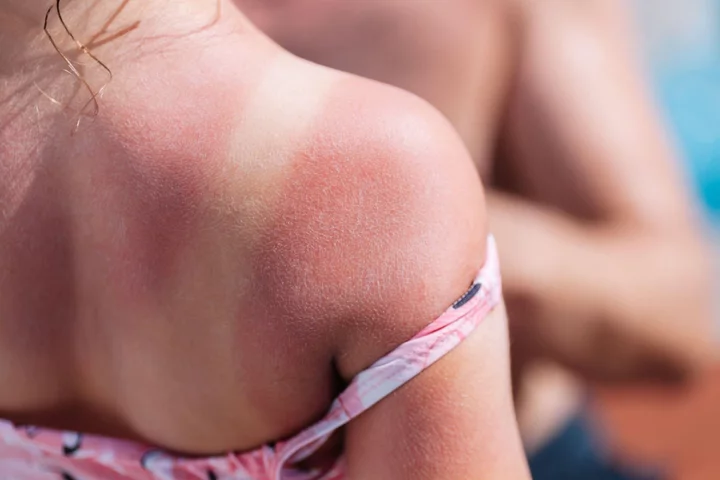
Bank holiday heatwaves predicted: 6 sunburn myths that could put you at risk
After a largely disappointing spring, the bank holiday weekend is set to bring with it the warmest weather of the year so far. Temperatures are predicted to go as high as 24C on Saturday and Sunday, according to the Met Office, with dry and sunny weather expected to last into next week. Many of us will be heading out to enjoy the sunshine – but as ever, it’s important to protect your skin from harmful UV rays. When it comes to tanning and sunburn, there are a variety of misconceptions that still abound, and the consequences of not following sun protection advice can be severe – especially as skin cancer rates across the UK have been rising, charities have warned. Here are five sunburn myths that could be putting your health at risk… 1. The UK and Irish sun isn’t strong enough for sunburn We might grumble about the gloomy weather in our part of the world, but the risk of sunburn remains for a large part of the year. “The sun can be strong enough in the UK between mid-March and mid-October to burn you,” says Karis Betts, senior health information manager at Cancer Research UK, which is working in partnership with Nivea Sun to educate consumers on how to be sun safe. “You’re most likely to get burnt in the middle of the day, when the sun is at its highest point, not necessarily its hottest.” UV rays are generally strongest between 11am and 3pm, she says: “It’s wise to take a break in the shade or indoors during these hours. And remember, you can burn through clouds.” 2. You have to go red before you go brown Our complexion can turn darker in the sun due to the release of melanin as the skin attempts to protect itself, but that doesn’t mean you need to turn lobster-red first in order to try and get a tan. “This is one of the biggest myths in sun protection, and it contributes to skin damage and skin cancer cases,” says Abi Cleeve, MD of Ultrasun UK. “The fact is that as soon as the skin reddens, it’s in trauma. A ‘trauma tan’ occurs from inadequate protection where the skin appears to tan more quickly, but hasn’t – it has burned. This only ensures that the skin peels, leaving the skin tan-less in days.” To avoid this pattern, Cleeve recommends gradually building up your time in the sun, and using higher SPF sunblock: “Use high UVA and UVB filter SPF – a minimum of SPF30 with a UVA filter over 90% will protect the skin and still tan, just more slowly [and] minimising long-term damage and peeling.” 3. The odd sunburn doesn’t make a difference It’s easy to get caught out by a sudden blast of sunshine, but don’t be fooled into thinking that one instance of sunburn here and there doesn’t matter. “This is something I hear a lot but unfortunately, it’s just not true,” says Betts. “Damage to our skin from the sun is the number one cause of melanoma, the most serious type of skin cancer, and skin damage from the sun builds up over time – it doesn’t go away after the burn fades.” That’s why wearing sunblock is crucial – even more so for children. According to the Skin Cancer Foundation: “Even one blistering sunburn in childhood or adolescence more than doubles your chances of developing melanoma later in life”. 4. People with darker skin don’t get sunburnt “Anyone can get sunburnt – including people with darker skin – but your risk of getting sunburnt and how sunburn feels will depend on your skin type,” says Beth Vincent, health information manager at Cancer Research UK. “For people with lighter skin tones, sunburned skin is usually red, sore, and swollen. In people with darker skin tones, sunburned skin might not change colour but will often feel irritated, itchy, tender and sore.” While people with lighter skin tones are generally at higher risk of sunburn and skin cancer, you should still use sunblock if you’ve got darker skin or a tan. In terms of sunscreen for darker skin tones, Betts recommends: “At least SPF15 and four or five stars [for UVA protection]. Make sure to reapply it regularly and generously, especially after swimming, sweating or towelling.” 5. All body parts are created equal when it comes to sunscreen “Burning – overexposure to UVB rays – tends to happen where the skin is closer to the bone structure, and especially where the part of the body faces directly the sun’s rays,” says Cleeve. “Tops of feet, shoulders, décolleté, top of the scalp and the nose – take extra care in these areas.” Other easy-to-miss areas include the scalp or parting, ears, areas around swimwear such as straps, and shorts that might move or rise up through the day. Cleeves top tip for all-over protection? “Do your sun cream naked! Then any movement in straps, shorts won’t suddenly bare unprotected skin to the sun’s rays.” 6. Aftersun products repair the damage done by sunburn “No, they don’t,” says Vincent. “While aftersun products may soothe the unpleasant symptoms of sunburn, they won’t fix any damage that was done to the DNA inside your cells.” If you do start to notice signs of burning, cover up or get out of the sun as soon as possible, she warns: “Don’t spend more time in the sun that day – even with sunscreen. And don’t rely on aftersun to fix the damage, because it can’t.” Read More Charity boss speaks out over ‘traumatic’ encounter with royal aide Ukraine war’s heaviest fight rages in east - follow live Dame Esther Rantzen faces stage four lung cancer: key facts about the disease Camilla receives ‘beautiful’ compliment after meeting children at historic library 7 foods that could help you get better sleep
2023-05-26 19:57
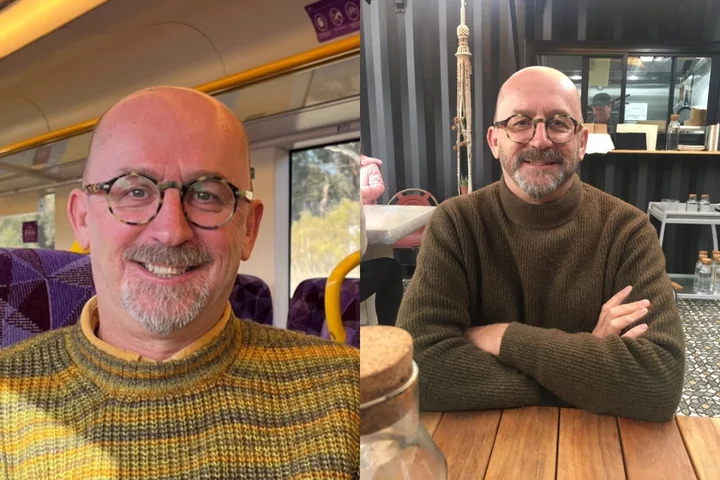
Australian man’s DNA test reveals he’s related to Kate Middleton: ‘We both have smashing smiles!’
An Australian man, who discovered he is a distant relative of the Princess of Wales through an AncestryDNA test, has said they both have the same “smashing smiles” and “great dress sense”. David Willis, 54, a union organiser, who lives in Avenel in Victoria, Australia, with his partner of 18 years, Rodney Kendall, 52, found out, in 2017 after doing the DNA test, that he is Kate’s fourth cousin once removed through his mother’s working class family from Durham in the UK. David, whose friends now call him a “queen”, has also tracked down a fourth cousin in Durham who he speaks to regularly via email – he hopes to one day meet her in person, and joked he might “extend (his) invitation to Kate”. But, despite the genetic evidence, David’s mum “still won’t believe him”, as she “always understood (their) roots to be working class”, but his cousins “are loving” the royal connection. On David’s father’s side, he has discovered that “they were a boat full of convicts”, so he now likes to jokingly refer to himself as “Kate’s convict cousin”. “I thought, what do Kate Middleton and I have in common? We both have smashing smiles, great dress sense and we’re distant cousins,” David said. “I have blue blood – my friends call me a queen – I truly am!” David began researching his family history more than 20 years ago, he explained: “I’m a bit of an amateur historian. “When Ancestry started – I’ve been involved for probably 18 to 19 years – I was able to access materials, resources and documents that in the past I would have had to have travelled to England to gain access to, so I was able to do that all online. “I researched my family on both sides, and that’s when it came up with an interesting connection.” In 2017, it appeared as if Kate was on David’s family tree, he said: “No one believed me – I had to double check the paperwork, and I thought what better way of doing it than testing my DNA through Ancestry. “I was able to just submit my DNA to finally prove and say to everybody that I got my research right.” It was confirmed that David’s mother’s working class family, from Durham in the UK, had links to Kate – they are fourth cousins once removed. David explained their connection: “We share a common ancestor, and we’re fourth cousins once removed. “We go back six generations and Kate goes back seven to our common ancestor, Jane Conyers, who was the daughter of a fellow called Sir Thomas Conyers, the ninth Baronet of Horden. “But, because he had three girls, the title died off with him and they married the local folk in the town. “So one of those girls was called Isabella, and her sister was called Jane. “About six generations ago, when my family sort of fell out of royalty with Sir Thomas, the rest of them were working in the coal mines – I find that fascinating stuff.” David has also discovered a third cousin, the daughter of his great-grandfather, who lives in Durham. He said: “We’ve actually been talking by email for probably one and a half years now, every couple of weeks. “She’s all excited about our family’s story. “And she did her DNA test too, and she’s definitely also related to Kate.” David explained how his family in Australia feel about being related to Kate: “My mother just doesn’t want to know – she doesn’t believe it because our family were always understood to be very working class. “Our family comes from Durham in the north, and my grandfather and his mother emigrated to Australia, after World War One, when my great-grandfather was killed. “He was a coal miner from Newcastle upon Tyne, so my family escaped poverty by moving to Australia, and we just always understood our roots to be working class. “So when there was a bit of a royal connection I don’t think we quite knew how to feel. “Mum still won’t believe me, but my cousins are loving it.” David explained how it feels to have a link to the current royal family: “I’m not a massive royalist by any means, because, in Australia, we’re a few steps removed. “But having said that, I still have a fascination with UK culture – I watched every bit of the coronation for example.” David explained the stark contrast between his mother’s and his father’s side of the family: “On my mum’s side we have sirs and Kate Middleton, but on my dad’s side, on the other side of the world, they were a boat full of convicts, so I joke that I’m Kate’s convict cousin!” Looking to the future, David hopes to meet some of his closer relatives in the UK, he explained: “I’d love to meet the cousin I’ve been emailing and have a trip to Durham. “Maybe I’ll also extend my invitation to Kate and see if she fancies joining!” Read More Kate Middleton sticks to royal protocol after fan asks for an autograph: ‘I can’t write my name’ ‘I did a DNA test and found out I had 7 siblings I didn’t know about’ Kate Middleton has touching response after child asks what it’s like to be a princess Charity boss speaks out over ‘traumatic’ encounter with royal aide Ukraine war’s heaviest fight rages in east - follow live
2023-05-26 18:57
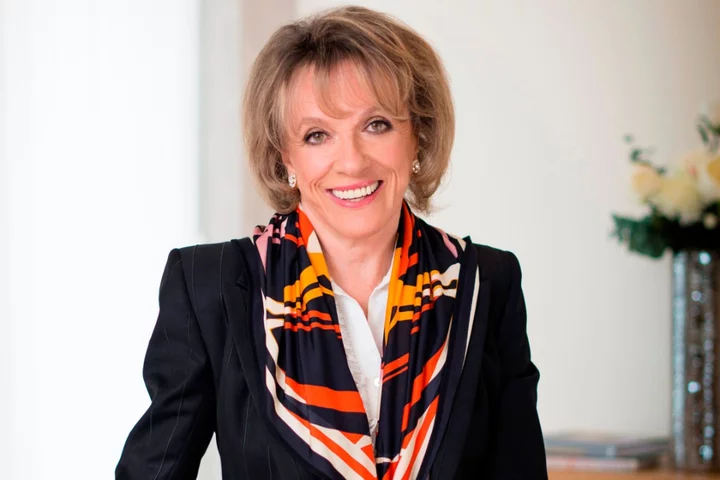
Dame Esther Rantzen faces stage four lung cancer: key facts about the disease
Dame Esther Rantzen has revealed that her lung cancer has progressed to stage four, after previously announcing in January that she had been diagnosed with the disease. The Childline founder and broadcaster told The Mirror that “nobody knows” if the new medication she is trying is working and a scan “will reveal one way or another”. Earlier in the year, Rantzen, 82, said she had “decided not to keep this secret any more because I find it difficult to skulk around various hospitals wearing an unconvincing disguise” and was “remaining optimistic”. Stage four is when cancer has spread from where it started to another body organ, according to Cancer Research UK, and is also called secondary or metastatic cancer. More than 43,000 people are diagnosed with lung cancer every year in the UK, according to the NHS, making it one of the most common forms of cancer – yet the disease is often shrouded in myths and misconceptions. So, what do you need to know? Here are some important facts about lung cancer… 1. Lung cancer can affect people of any age According to John Costello, a pulmonologist at the Mayo Clinic: “Lung cancer is certainly more common in older people – the average age of diagnosis is 70 years.” This does not mean it only ever affects older age groups, however. Lisa Jacques, lead specialist cancer nurse at Perci Health, says: “Most people develop lung cancer in their 60s and 70s, after many years of smoking, but occasionally people get lung cancer at a much younger age, even in their 20s and 30s.” 2. Lung cancer is not always caused by smoking Although smoking can certainly increase your chances of developing lung cancer, it is not the only cause. “Smoking is the cause of most lung cancers and the biggest risk factor, but about 10% of people who get lung cancer have never smoked,” explains Jacques. Costello adds: “There are some lung cancers which are genetic and may not be smoking-related, and some others are caused by exposures to substances like asbestos, radon gas and passive smoking” – although he says these are “relatively uncommon”. 3. Stopping smoking can help protect you Costello says: “Some of the damage and inflammation caused by smoking can be reversible, but in particular, emphysema is architectural destruction of the lung which causes extreme breathlessness and cannot be reversed.” So quitting smoking might reduce your risk and is always worthwhile for your health – but not starting the habit at all is much better. Speak to your GP if you would like support with quitting. 4. Lung cancer is not always deadly A diagnosis of lung cancer does not always mean certain death, but it is still serious. “Lung cancer has a 65% survival rate for five years in people with localised disease,” says Costello. “If it has spread around the body at the time of diagnosis, the survival rate is only 8%.” However, he says there are “new techniques in screening for lung cancer, such as CT scans in smokers over 50 years with a serious tobacco background”. These “may pick up very small early tumours, which can be removed with up to an 80-90% five-year survival rate”. So if you have concerns about a persistent cough, which is one of the key warning signs, see your GP and get it checked out as soon as possible. 5. Men are more likely to get it but women still need to be aware According to Cancer Research UK, men are more likely to get the disease than women (52% of lung cancer cases are men, compared to 48% of women). However, these margins are small, and women absolutely do need to be aware of lung cancer as well. “Lung cancer has been an increasing problem in women since they caught up with men in terms of smoking habit, and they are therefore at risk if they smoke, and some of the non-smoking related lung cancers are more common in women,” says Costello. Jacques adds: “It is the third most common cancer in the UK, and in women it is the second most common cancer type.” So, whether you smoke or not, look out for the symptoms of lung cancer – like a cough lasting longer than two or three weeks, recurring chest infections, breathlessness or aches and pains when breathing – and see your GP if you have any concerns. Read More Charity boss speaks out over ‘traumatic’ encounter with royal aide Ukraine war’s heaviest fight rages in east - follow live Camilla receives ‘beautiful’ compliment after meeting children at historic library 7 foods that could help you get better sleep Household energy bills set to fall from July: 7 ways to help keep bills as low as possible
2023-05-26 18:45
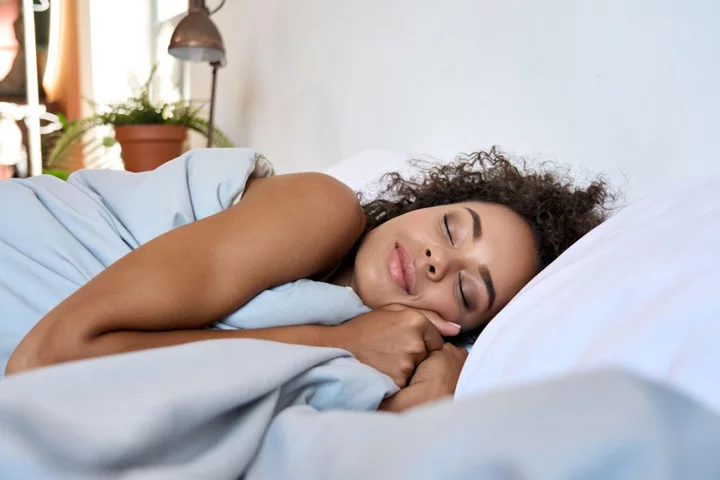
7 foods that could help you get better sleep
Wondering whether certain foods can affect your sleep patterns – or if eating certain things could actually help improve your sleep? The relationship between diet, sleep and overall health is two-sided, says Gabi Zaromskyte, registered nutritionist and founder of Honestly Nutrition. “Meaning what we eat and drink affects our sleep, but also, the quality and duration of sleep can affect our food choices,” Zaromskyte explains. “Scientific research has increasingly shed light on the significant impact of dietary choices on cognitive function, mood, and overall physical and mental health,” she adds. Certain dietary patterns and specific nutrients have been found to influence the sleep-wake cycle, sleep latency (the time it takes to fall asleep), and sleep architecture (the different stages of sleep), notes Zaromskyte. She continues: “And the quality and timing of our food and beverage intake can impact the production of sleep-regulating hormones, such as melatonin, which plays a critical role in regulating our sleep-wake cycle.” However, as Dr Maja Schaedel, co-founder of The Good Sleep Clinic points out, it’s important to understand that most research done so far shows that even though certain foods may be higher in melatonin, that does not necessary equate to falling asleep quicker. “You may have higher levels of melatonin, but if you’ve got stuck in a bad habit of tossing and turning for two hours before drifting off, or waking at 3am and not being able to return to sleep, foods high in melatonin are not going to solve your problem,” says Schaedel. She suggests that generally, it’s best to eat your evening meal at least two hours before bed, to avoid any indigestion, spikes in blood sugar and increase in body temperature that can occur while digesting. “If you tend to get peckish later in the evening, then plan a snack an hour or two before bed,” Schaedel adds. “It’s best to have something high in protein, like Greek yoghurt or nuts, and low in complex carbohydrates to avoid any spikes and falls in blood sugar.” Also, it might be wise to avoid the usual culprits which can trigger discomfort. “Fatty and spicy foods can cause heartburn and indigestion which can hinder good sleep, as well as alcohol, caffeine and tobacco,” says Lisa Artis, deputy CEO of The Sleep Charity. Here, experts share their go-to foods for supporting healthy sleep… 1. Cheese “Cheese gets a bad reputation as it’s commonly believed to give us nightmares, but actually it’s the opposite,” says Artis. “Cheese, and other dairy products, contain tryptophan, an amino acid which helps us to nod off more easily, and calcium which helps to reduce stress.” 2. Cherries To find out if foods with naturally occurring melatonin make a difference for you, Artis suggests giving cherries a go – particularly tart cherries, which have been found to naturally boost the production of melatonin. Zaromskyte says several studies have shown significant improvements in sleep quality and duration when consuming Montmorency cherries or tart cherry juice, where the concentration of naturally occurring melatonin and phytochemicals is higher compared to whole cherries. 3. Low sugar cereals “Cereal can also help us to sleep – but we must be mindful of the type of cereal,” says Artis. “There are lots of sugary options on the market, so try to avoid these.” She says complex carbohydrate-rich foods increase the availability of tryptophan in the bloodstream which, in turn, may help us to nod off. 4. Bananas Bananas are an excellent source of magnesium, potassium and tryptophan, says Artis. In other words, a great choice when it comes to supporting sleep. “While bananas have lots of great qualities for sleep, all fruit contains sugar too, so be mindful of this in the run up to bedtime,” she notes. “Try blending one banana with one cup of milk or soya milk to make an ideal evening drink.” 5. Almonds “Almonds are a brilliant source of calcium and magnesium, which promotes both sleep and muscle relaxation,” says Artis. “Magnesium also helps to regulate melatonin levels and keep blood sugar levels stable overnight.” 6. Magnesium rich foods Magnesium, an essential mineral, has been found to play a crucial role in sleep regulation – and can influence sleep quality and duration, says Zaromskyte. “It acts as a co-factor in more than 300 enzymatic reactions in the body, including those involved in the production and regulation of neurotransmitters and hormones that impact sleep.” Some magnesium-rich foods cited to help improve sleep quality include pumpkin seeds, spinach, almonds and dark chocolate (which is packed with health-enhancing antioxidants too). 7. Omega-3 rich foods Although research is limited, some evidence suggests foods rich in omega-3 fatty acids may promote better, longer sleep, says Zaromskyte. “For example, walnuts are a source of melatonin and other sleep-regulating compounds, such as an amino acid tryptophan and omega-3 fatty acids,” she says. “Other omega-3-rich foods include oily fish, like salmon, trout, mackerel and sardines, chia seeds and flaxseeds.” Read More Charity boss speaks out over ‘traumatic’ encounter with royal aide Ukraine war’s heaviest fight rages in east - follow live Household energy bills set to fall from July: 7 ways to help keep bills as low as possible Queen of Rock ‘n’ Roll Tina Turner’s most iconic looks 11 stylish ways to kit out kids’ bedrooms
2023-05-26 15:24
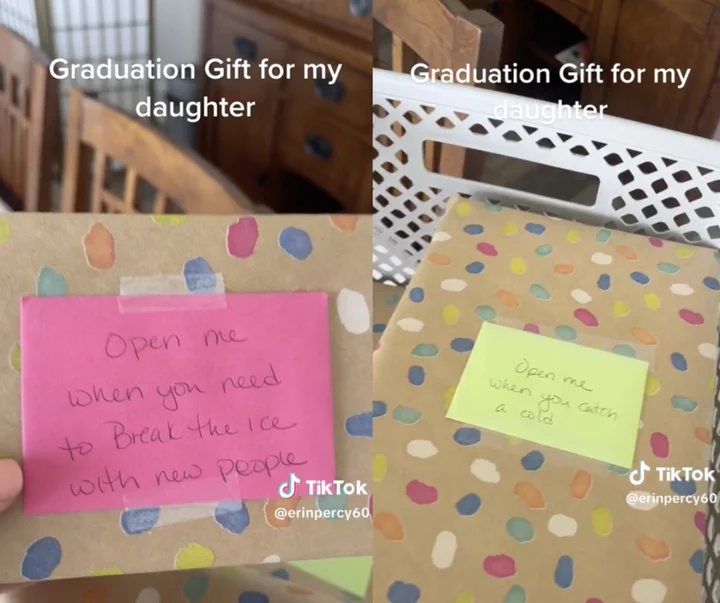
Mother reveals the sweet meaning behind viral graduation gift for her daughter
A mother has discussed the sweet meaning behind the now viral gift that she made for daughter, after her high school graduation. Erin Percy, who goes by the username @erinpercy60, shared a recent video on TikTok of the gift for her daughter, who will be going to college in the fall. Throughout the footage, which was set to a score from the Pixar film Up, the mother showcased a handful of wrapped presents, with a different note attached to each one. The first gift was labelled with a note that read: “Open me when it’s cold outside,” while the second gift had a note that said: “Open me when you catch a cold.” This trend continued with other gifts, two of which read: “Open me when you need a little me time” and “Open me when you don’t have time to do laundry”. While she continued to showcase the rest of the presents, Percy ended her video by placing one gift, which read: “Open me when we say goodbye”, in a basket. As of 25 May, the video has more than 1.2m views, with TikTok users praising the gifts in the comments. They also expressed how they wanted to know what the presents were. “The goodbye one broke me,” one person wrote, while another added: “This is so sweet.” A third wrote: “You’re KILLING ME. I’m dying to see what’s inside. My daughter is off to university in the fall and I’ve been thinking about the care packages.” Speaking to Today.com, Percy shared that her daughter, Abby Rose, will be leaving her hometown in Alabama in the fall, as she’ll be attending the College of Charleston in South Carolina. @erinpercy60 Graduation Gift for my daughter ♬ Up - Movie Theme - Giampaolo Pasquile She also acknowledged why these various gifts to her daughter were so important . “I wanted to give her a few things for those important moments that I’m going to miss,” she explained. The mother went on to praise her relationship with Abby, noting that when she was battling cancer, her daughter was by her side. She also confessed some of the daily fears that she still has, as a stage 3 breast cancer survivor. “Abby Rose was my biggest cheerleader when I was sick from surgery, chemo and radiation,” Percy shared. “Even though I’m seven years in remission, I worry, ‘What if I can’t be there for her?’ Subconsciously, I think that had something to do with the gifts as well.” Although Abby’s school is nine hours away from home, Percy acknowledged how thrilled she is for her daughter and her upcoming opportunity. “I’m so excited for this next chapter,” she explained. “She had a hard high school experience because of Covid — and I just want her to have an awesome, normal, college experience.” Speaking to Today.com, Percy also revealed what her gifts actually were. For example, in the gift labelled “Open me when we say goodbye”, the mother gave her daughter a necklace. “When she was little I used to sing her the song ‘You are my Sunshine,’” she explained. “So I got her a sun necklace — and we each get one half. I’m already wearing mine.” For a gift labelled “Open me when you need a little jolt,” she got Abby a Starbucks gift card, in addition to an Insomnia Cookies gift card, which was part of her “Open me before midterms” gift. She also got her daughter “a week’s worth of socks and underwear”, which was for Abby to open when she doesn’t “have time to do laundry”. The Independent has contacted Percy for comment. Read More Mother hit with deluge of abuse for taking toddler’s packed lunch to a restaurant Uvalde victim's mother perseveres through teaching, connecting with daughter's memory Mother claims using a miraculous eye cream has taken years off her in just weeks Robert De Niro reveals name of newborn as he shares first photo of seventh child Mother shares horrifying moment she found ticks living in her daughter’s ear Influencer hospitalised for after horse falls on her at Arizona ranch
2023-05-26 07:28
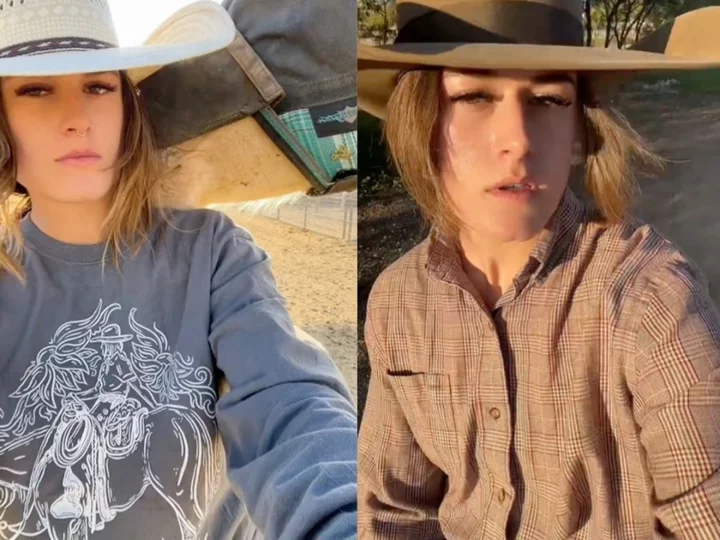
Influencer hospitalised for traumatic brain injury after horse falls on her at Arizona ranch
Emmie Sperandeo, a social media influencer known for her Western lifestyle content, has been hospitalised after suffering from a horse-related injury. The 27-year-old influencer, who goes by @steadyrein on TikTok, was injured last week in Arizona when the horse she was riding “spun and fell on top of her,” her father, Marino Sperandeo, told Phoenix-based news station KTVK. “She was holding on to the horse and was whip-lashed by the horse as it fell sideways. That caused her head to hit the floor,” he said. According to the GoFundMe campaign set up to help cover her medical bills, Emmie was airlifted to a trauma centre on 15 May. In addition to suffering two skull fractures from the incident, she was also bleeding from her ears when she arrived unconsious at the hospital’s intensive care unit (ICU). Emmie was already healing from a concussion and broken finger injury that occurred just one month prior, when she was thrown from a bucking horse, her father said. On 19 May, doctors said that Emmie had stabilised and had regained consciousness for brief periods of time, an update on her GoFundMe page read. “She’s a tough kid but she’s got a long road ahead of her,” her father said, adding that all she can remember are memories from seven to 14 years ago. @steadyrein mornin’ #arizona #ranchlife #solotraveler #cowpoke #westernstyle ♬ Sleep on My Side - Megan Moroney Three days later, her family shared that Emmie was stable enough to move from the ICU to the neurological ward where she’ll undergo both speech and physical therapy. However, her sister Natalie said in a message on her GoFundMe page that Emmie ”still is unable to comprehend why she’s here, or why people are writing to her.” As of Thursday (25 May), more than $186,000 has been raised to reach the family’s $250,000 goal for rehabilitation fees and animal care expenses. @steadyrein cant get this outta my head ♬ I'm Not Pretty - Megan Moroney “To everyone who loves Emmie – thank you for thinking of her and sending her the strength that she will need to recover,” read a message on the fundraising page. Emmie Sperandeo has 1.6m followers on TikTok, where she posts videos working on ranches and travelling throughout the US. Most recently, she had documented her journey from Montana to Arizona. @steadyrein ❤️ #montana #solotraveler #oldwest #ranchlife #cowpoke ♬ september sparky deathcap - faith “Praying for you!!!!!” one fan commented on her last TikTok video before the horse-related accident. “You have been a role model for me for so long and I am wishing you a speedy recovery,” another fan said. Read More Miss Universe finalist Sienna Weir dies aged 23 from tragic horse riding accident Influencer Alix Earle claims she was ‘stranded’ in Italy after villa she booked turned out to be ‘scam’ ‘I saw the opportunity’: Woman defends picking up ‘$8,000 bubble sofa’ from New York street Alix Earle claims she was ‘stranded’ in Italy after villa turned out to be ‘scam’ Bioré apologises after influencer references school shooting in pore strips ad Mother reveals the sweet meaning behind viral graduation gift for her daughter
2023-05-26 07:28
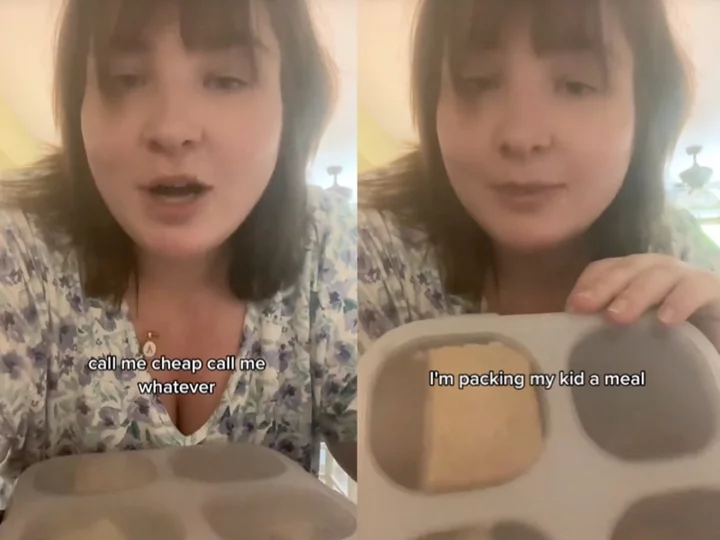
Mother hit with deluge of abuse for taking toddler’s packed lunch to a restaurant
A mother of two has faced backlash after revealing that she packs her toddler a meal to eat out at a restaurant. Karlie Smith, a 21-year-old mother from Ohio, went viral on TikTok this week when she shared how she gets her two-year-old son to eat at a restaurant. “Call me cheap, call me whatever, but if we’re going out to a restaurant, I’m packing my kid a meal,” she began the TikTok, which has since been viewed more than 55k times. Smith, who goes by @unbreakablemomma on the app, shared with her followers that her family gets together for dinner on Friday nights, but this time was different because they were going to a restaurant. “My son is not getting food out,” she said, before explaining why she prefers to pack her son a meal ahead of time. “For one, you want me to pay $6.99 for chicken tenders and fries that my son is going to throw half of it on the floor, you’re crazy. Also, whatever I pack is probably gonna be healthier than what the restaurant has anyways.” The mom then showed the meal she had packed for her toddler, which included a peanut butter and jelly sandwich, cut-up banana, mild cheddar cheese cubes, and a chocolate Lara bar stored in a plastic container. “Also, when we get to a restaurant, my child is not waiting for anyone to take his order – he wants to eat now,” she said. “I can just hand him this and let him go to town. Also, my child is not opinionated. He does not care what he eats; he just wants to eat.” However, Smith added that if her son wants restaurant food, she’ll order it. “Also, I usually get him chocolate milk because that’s his little takeout treat,” she said. “And after he finishes his food, he’s usually eating off my plate.” While Karlie Smith’s parenting hack may work for her family, many people in the comments section were outraged that she would deprive her son of restaurant food. Some TikTok users went so far as to claim it was a form of “abuse” to pack her toddler a pre-made meal. “My brother-in-law’s step-father used to do this to him as abuse,” read the top comment under Smith’s video. In response, the mother of two wrote back: “No one said I’d do this forever, I even said if he wanted something off the menu I would give it to him and share my meal, but he’s happy.” @unbreakablemomma ♬ Monkeys Spinning Monkeys - Kevin MacLeod & Kevin The Monkey Others chimed in, “Stop throwing the word abuse around,” and, “At that age they don’t know the difference between restaurant food or a home-cooked meal. It’s far from abuse.” Some people also claimed that eating out at a restaurant should be a special occasion for everyone, including their young ones. “I just bring a snack for the wait but I think going out to eat is special for everyone, not just the adults,” said one TikToker. “In my house everyone eats out or no one eats out! My parents had the same rules!” another wrote. When one parent shared that they tried pre-packing their daughter’s meal once but they felt “so much mom guilt” for “leaving her out,” Smith replied: “I get it! Sometimes I take my son out for special mommy and me meals!” Despite the negative comments, many people still praised Smith’s parenting tip and told her to block out the haters. “This is actually genius. My son is so picky and I always end up paying for something he doesn’t eat,” said one TikToker. “Love this! My kid is autistic and doesn’t want to wait for the order to come,” another person said. “Go momma!!” “I thought everyone did this!!” said someone else. “Literally common sense to bring toddlers snacks while eating out!!? It’s like a parent hack.” However, it was Karlie Smith who had the last laugh when she poked fun at some of the backlash in a follow-up video. “What people think I do because I said I pack a meal for my two-year-old at restaurants,” she wrote over a separate TikTok video, which saw Smith act out outlandish scenarios, such as feeding her child a can of green beans and a raw onion. @unbreakablemomma Replying to @Kayla2022 the american girl doll is a paid actress ♬ Monkeys Spinning Monkeys - Kevin MacLeod & Kevin The Monkey “You clap back at those haters, girlfriend,” said one fan. The Independent has contacted Karlie Smith for comment. Read More College student says didn’t know she was pregnant until baby was crowning due to ‘cryptic pregnancy’ A TikTok model made viral videos of her grandmother’s choice to die. Here’s why Mother speaks out after video about putting fake tan on baby goes viral
2023-05-26 06:20
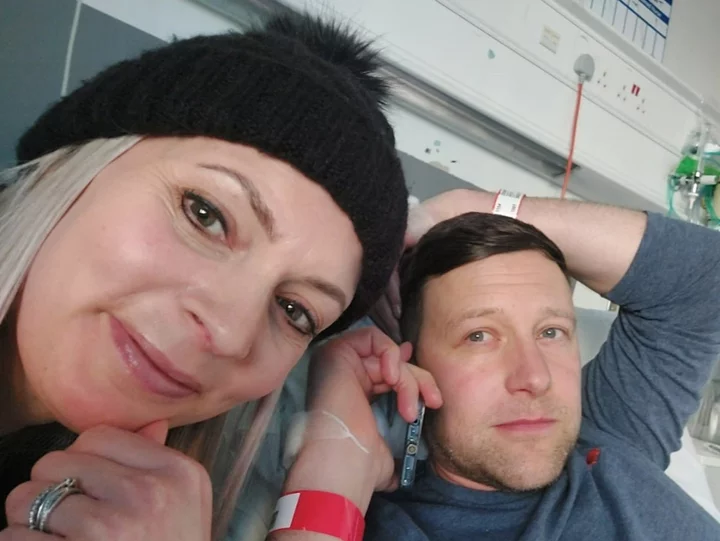
Man’s ‘long Covid’ turns out to be decade-old brain tumour
A man who put his tiredness down to long Covid was told he actually had a brain tumour that had been growing for 10 years. Grant Churnin-Ritchie, 42, repeatedly visited his GP after a bout of Covid in July 2021 left him with constant tiredness and a tingling in his right arm. For several months, he was told it was long Covid, but Grant was convinced it was more serious. After blood tests, an ECG and an MRI scan, it was revealed he had a pituitary tumour. This type of tumour affects the pituitary gland, a pea-sized organ in the brain which controls growth and development. Grant, a Microsoft specialist from Horsforth, Leeds, West Yorkshire, said: “I kept going to my GP who said I had long Covid. This went on for several months, but I really didn’t feel well in myself and felt it was something more serious. “I was so tired and I was experiencing a tingling sensation in my arms. “I had blood tests and an ECG at Seacroft Hospital in Leeds, which revealed an abnormal heartbeat.” Grant was also told he had adrenal insufficiency - in which the adrenal gland doesn’t make enough hormones - and hypothyroidism - an under-active thyroid gland. These are both symptoms of a pituitary tumour. The father-of-three said: “An endocrinologist at St James’ University Hospital said it could be caused by Covid or a pituitary tumour. “An MRI scan confirmed it was a brain tumour which had probably been growing for 10 years.” Grant waited 11 months for his operation before the tumour was removed on January 16 2023. He said: “Soon after, I started to feel a lot better. Removing the tumour allowed some of the adrenal gland to start functioning again. “Even though I now have to take medication, I can lead a normal life. “Even though surgeons removed the tumour, there is a 20 per cent chance of it growing back. “I have an MRI scan in July so I should know more then.” Grant raised £2.5k after running Leeds Half Marathon for Brain Tumour Research on May 14 with his wife, Hannah, 40. He said: “Being able to run the half marathon with my wife Hannah was great, and I’m glad to be able to raise awareness of brain tumours. “Because I only had two months to train for the race, I found it very hard to complete. Luckily, I had my wonderful family and friends cheering me on which got me through it. “I wanted to give something back, and this was my way of saying thank you to the medical teams and Brain Tumour Research for what they do for people with this disease.” Matthew Price, community development manager at Brain Tumour Research said: “We’re really grateful to Grant for taking on the Leeds Half Marathon as it’s only with the support of people like him that we’re able to progress our research into brain tumours and improve the outcome for patients like him who are forced to fight this awful disease.” SWNS Read More Boy, 8, rushed to hospital after feeling constipated diagnosed with cancer A TikTok model made viral videos of her grandmother’s choice to die. Here’s why Parents of baby who died in maternity scandal say care concerns ‘batted away’ A 1D fan claimed she had a tumour. We still don’t know the truth after her death Talented boxer reveals first sign of brain tumour after collapsing at service station Father shares cancer symptoms he thought was too much coffee
2023-05-25 17:51
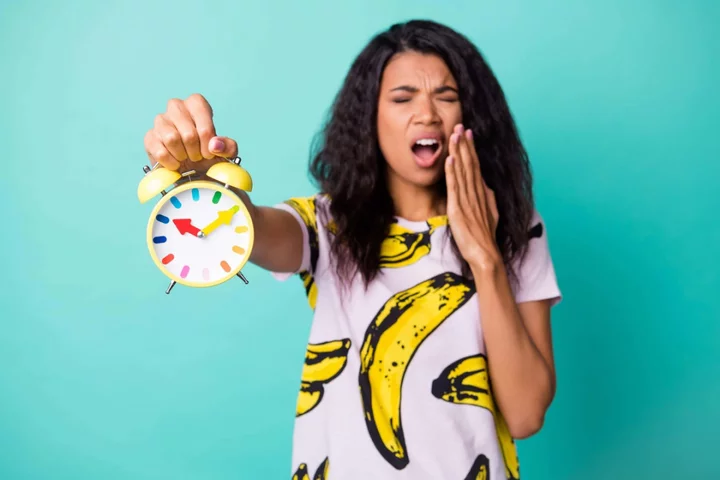
How to sleep in the heat, as summer weather finally arrives
Summer heatwaves are on the way, with temperatures predicted to jump into the mid-twenties this weekend and beyond. As lovely as this sounds though, as many of us have experienced year after year, sleeping in the heat can be challenging. So, why is sleeping harder when it’s hot? “Our bodies need to cool down in order to sleep” explains Theresa Schnorbach, psychologist and Emma sleep scientist. “As everyone’s bodies are acclimatised to different environments, there’s no hard and fast rule as to what temperature your bedroom should be, but it is recommended that your sleep environment be comfortably cool – usually this means between 15.5-19°C. If we are too warm, our core temperature is unable to drop, making it more difficult to fall asleep and causing sleep disturbances,” Schnorbach adds. So, how can you boost your sleep quality during summer heatwaves? 1. Ventilate wisely “Firstly, you should look to keep windows and curtains closed during the day to help keep your bedroom cool,” suggests Schnorbach. “During the night, you can open your windows and curtains to allow a fresh breeze in. A fan can also help to keep cool air circulating throughout the night, and the white noise produced by this can also have the added benefit of helping you to drift off.” Of course, only leave windows open if it’s safe and secure to do so. If that’s not an option, vents and fans may be your best friend for summer slumber! 2. Change your bedding if necessary “It’s also worth thinking about your mattress and bedding materials in warmer weather. Mattresses with open coil systems, for example, can allow air to circulate throughout,” says Schnorbach. “If you’re not looking to replace your whole mattress, a mattress topper can be a great alternative. When made from the right material, mattress toppers can keep you fresh and cool throughout the night by providing another breathable layer on top of your mattress, helping to regulate your body’s temperature and give you a comfortable sleep.” 3. Consider your pulse points It can be extremely frustrating when you’re tossing and turning due to over-heating. There may be additional steps you can take to boost that cool-down effect. “Utilise your body’s pulse points – areas where your blood flows closest to the surface of your skin, such as your wrists or the sides of your neck. Wrap an ice pack in a cloth or a towel – never apply ice directly to your skin – hold it against these pulse points to help you quickly cool off,” Schnorbach suggests. “Similarly, you can also use a hot-water bottle filled with cold water, a cool, damp flannel, or try splashing cold water on these pulse points. Your body’s blood vessels will react to the cool sensation and instantly bring your core temperature down. However, avoid your feet and hands, as this can prevent you from falling asleep.” 4. Take a lukewarm shower “While a freezing cold shower before bed may be what you’re craving to help beat the heat, I suggest opting for one that is lukewarm instead,” adds Schnorbach. “A shower that is too cold will actually cause the body to warm up again to re-balance the body temperature.” 5. Go nude or wear cotton “If you’re someone that can’t sleep without some kind of clothing on, wearing pyjamas of natural cotton is your best bet, as the material actually helps your skin breathe while absorbing your sweat during the night,” Schnorbach explains. 6. Munch on sleep-supporting fruits “A summer fruit that’s usually plentiful in the warmer months, cherries help to increase melatonin – a hormone that helps in promoting sleep. By producing more melatonin, your body can help better regulate its internal clock and you can doze off more easily at night,” Schnorbach explains. “Bananas are another fruit that can also help aid sleep. Bananas have high levels of magnesium and potassium, which can help to increase your sleep duration and promote relaxation.” 7. Have a cuddle And Schnorbach’s final tip? Have a snuggle. She says: “While it may feel counterintuitive, a cuddle before bed can help in reducing your core temperature by encouraging your blood vessels to dilate, thus losing excessive body heat.”
2023-05-25 15:57
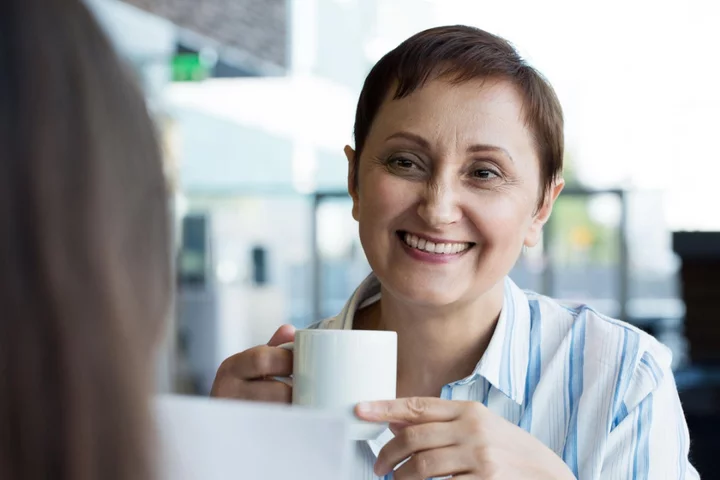
Menopause stigma still ‘rife’ in workplaces as women fear for their careers
Nearly half (44%) of women experiencing menopause symptoms ‘suffer in silence’ at work, due to fears it could negatively impact their career. In a bid to hide symptoms, 48% say they would lie about why they needed a sick day, rather than saying menopause was affecting them, and 39% are still embarrassed to talk about the topic at work, according to a new survey by Lime Solicitors. The law firm polled 1,001 women who are experiencing or have experienced menopause or perimenopause. The research, carried out in April, also found 60% of respondents think their workplace should offer more menopause support, and less than a third (29%) of the women surveyed said they would feel comfortable asking for adjustments to help support them with menopause symptoms. “Our research shows that almost half the of women surveyed think going through menopause will negatively impact their career, which is why so many women suffer in silence,” said Neha Thethi, head of employment at Lime Solicitors. “It appears employers are failing an important part of their workforce by not providing the necessary support or creating a positive culture whereby people can raise concerns or issues with confidence. “To help dispel the stigma around menopause and empower women to speak freely and honestly about their experiences, we need menopause champions in all workplaces,” Neha added. How can employers help? “Menopause is a simple fact of life, and very much a reality in the workplace,” Paula Allen, global leader of research and total wellbeing, and senior vice-president at TELUS Health, told PA Media. While there has been a big increase in menopause awareness in recent years – with a number of celebrities, such as Davina McCall, shining a light on the topic, there’s still progress to be made. “It isn’t paid much attention in the workplace as a health issue, and therefore is rarely managed in a way that is optimum,” she added. She said, “eradicating stigma and inaction starts with education” – which can include “wellbeing sessions on all aspects of women’s health, including menopause, and training of managers on how to support employees with health needs”. Dee Murray, CEO of Menopause Experts Group, agrees awareness training is a key part of the picture. “Women who experience menopausal symptoms in the workplace are likely to need some support, or at the very least signposting, when they most need help,” said Murray. “Making sure line managers are trained, or at least have some basic knowledge, is hugely important. It’s also important to remember that those managers too may be experiencing menopause symptoms, or will do at some stage, if they are female. “Menopause champions – just like mental health first aiders – have become a vital part of the workplace for many women,” Murray adds. “Champions allow women to feel safe speaking out about symptoms that may be causing them extra anxiety and challenges at work. “Far too many women still feel embarrassed about discussing symptoms, and they must feel secure in the knowledge that they will not become the butt of the office jokes or judged about their symptoms, which can often be debilitating and very personal.” Workplace adjustments Allen said: “The good news is that even though menopause is a noteworthy health issue, the support needed from a workplace point of view can be quite simple. For example, menopause can cause drastic changes in body temperature, which can be addressed with fans, or by offering desks with windows or air conditioning vents close by. “Symptoms of menopause may also include insomnia, irritability and depressive symptoms, all of which have a physical base but can impact behaviour and mental wellbeing. With this, employees should take advantage of the personal support offered by their workplace through their Employee Assistance Program (EAP) and their Telemedicine provider if available.” A flexible approach Murray notes that flexible working can be an effective adjustment too. “Employers who offer flexible working hours and remote working will benefit in the longer term. Firms with Menopause Approved status find they have better retention of staff and are more competitive when it comes to recruitment too,” she said. “Those experiencing menopause are not always seeking special treatment, just acknowledgement and support to help them through what can be a tricky time.” Read More Charity boss speaks out over ‘traumatic’ encounter with royal aide Ukraine war’s heaviest fight rages in east - follow live Signs and symptoms of breast cancer as Amy Dowden reveals diagnosis Helen Flanagan says she spent her 20s ‘pregnant and breastfeeding’ Baby food and drink guidelines needed over sugar concerns, say health campaigners
2023-05-24 19:59

Signs and symptoms of breast cancer as Amy Dowden reveals diagnosis
Strictly Come Dancing professional dancer Amy Dowden has revealed she has been diagnosed with breast cancer. Caerphilly-born Dowden, who joined the BBC dance competition show in 2017, shared the news on Instagram, telling fans that she is “determined” to return to the dance floor as soon as she can. The 32-year-old wrote: “Hey all, I’ve got some news which isn’t easy to share. I’ve recently been diagnosed with breast cancer but I’m determined to get back on that dance floor before you know it.”Maldives Dowden went to the GP after realising the lump had grown after her holiday. Last week she was diagnosed with stage three breast cancer. She told Hello Magazine: “My doctor explained to me that there are three grades, and three is the most aggressive, but they feel like they’ve caught mine early and to not be too alarmed because grade three would be expected in somebody of my age. “You just don’t ever think it’s going to happen to you. I hadn’t thought it was possible to get breast cancer at my age. “My mum has had breast cancer, but she had it at a later age, in her 50s.” What are the signs to know? Many women know that a lump can be a possible symptom of breast cancer, but there are other signs of the disease to look for,” says Manveet Basra, head of public health and wellbeing at Breast Cancer Now. “While most breast changes, including lumps, won’t be cancer, it’s important to contact your GP as soon as possible if you notice a change to your breast that’s new or unusual for you, as the sooner breast cancer is found, the more successful treatment is likely to be.” Clare O’Neill from CoppaFeel!, wants everyone to be breast aware, “Because people of all ages and genders have breast tissue”, she says. She recommends checking your breasts or pecs once a month, while adding: “It can be normal to have pain and lumps around the time of your period.” So what symptoms other than lumps should you be aware of? If you see “any puckering, thickening, dimpling or rash of the skin, talk to your doctor”, advises O’Neill. “Also talk to your doctor if you notice a change in direction of the nipple or any bleeding or discharge from the nipple, or swelling of the chest or armpit. Breast awareness is not supposed to be scary, it’s about empowering people to know their bodies.” How to check your breasts “Checking your breasts only takes a few minutes. It could be when getting dressed, when showering or putting on moisturiser,” says Basra. “It’s important to remember to check your whole breast area, your armpits and up to your collarbone (upper chest) for changes. There’s no special technique, it’s as simple as TLC: Touch, Look, Check.” See your GP if you have any worries about possible symptoms, and you can call Breast Cancer Now’s free helpline on 0808 800 6000. Read More Charity boss speaks out over ‘traumatic’ encounter with royal aide Ukraine war’s heaviest fight rages in east - follow live Helen Flanagan says she spent her 20s ‘pregnant and breastfeeding’ Baby food and drink guidelines needed over sugar concerns, say health campaigners Period advice now being offered by Amazon’s Alexa
2023-05-24 19:19
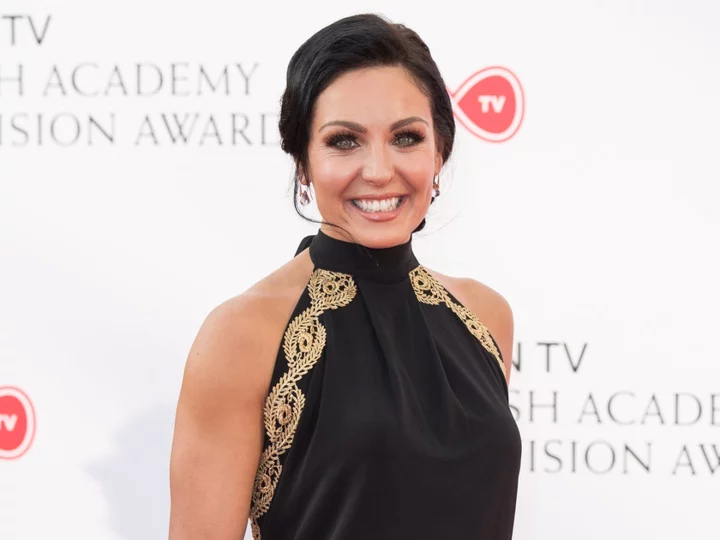
Strictly Come Dancing star diagnosed with breast cancer aged 32
Professional dancer Amy Dowden has revealed that she has been diagnosed with breast cancer. The Strictly Come Dancing star, 32, said she received the diagnosis “last week” and described it as “another hurdle” in her life. Speaking to Hello!magazine, Dowden said: “I’ve been through quite a lot in my life and this is another hurdle. “But if I’m positive and strong, I’ve got a really good chance of getting back out on the dance floor as soon as possible.” Dowden also suffers from Crohn’s disease, a lifelong condition where parts of the digestive system become inflamed. She campaigns for awareness around Crohn’s and released a BBC documentary Strictly Amy: Crohn’s and Me about living with the disease in 2020. She pointed towards her work around raising awareness of Crohn’s and said she hopes to “do the same” with breast cancer. “If I can try to turn this negative into a positive, it’s going to help me get through this,” she added. The dancer, who married her partner Ben Jones in South Wales last July, continued: “You just don’t ever think it’s going to happen to you. I hadn’t thought it was possible to get breast cancer at my age.” She revealed that her mother has also had breast cancer in the past, but she was diagnosed in her fifties. According to Cancer Research UK, there are around 55,900 new breast cancer cases in the country every year, with around 5,000 women under the age of 45 diagnosed. Around eight in 10 (80.6 per cent) of women in England who are diagnosed between the ages of 15 and 44 survive breast cancer for 10 years or more, data from the organisation shows. Dowden said she only began making a “conscious effort” to check her breasts for signs of cancer after taking part in CoppaTrek! With Gi, a fundraising walk led by blogger and podcaster Giovanna Fletcher for breast health charity CoppaFeel! She credited the charity with “potentially [saving] my life”, adding: “I don’t know how long this lump could have been there before I would have noticed and done something about it.” The dancer added that she hoped speaking about her diagnosis “might end up saving some other people’s lives” if she prompts them to check their breasts. She first found a “hard lump” in her right breast in April, a day before she and Ben were due to fly to the Maldives for a delayed honeymoon. Dowden said she was “in shock” and initially thought the lump could have been “period-related” or something else, but decided to “keep an eye on it”. After returning from holiday, Dowden said she realised the lump “felt so much bigger” while preparing to do a dance show with her husband and decided it was time to see her GP. She was sent for an emergency referral. Dowden’s doctors believe the cancer was discovered early, but she is still awaiting more information before getting a full treatment plan, which “will definitely include surgery”, she said. “I don’t know what stage the cancer is yet, until I have an MRI scan and a biopsy on a second lump they have found in the same breast,” she explained. “Once they’ve got that, they can give me a full prognosis.” Posting on Instagram after her interview was published this morning (Wednesday 24 May), Dowden told her followers: “Hey all, I’ve got some news that isn’t easy to share. I’ve recently been diagnosed with breast cancer but I’m determined to get back on that dance floor before you know it. Welsh love Amy.” Read More Breast cancer symptoms you should look out for Start mammograms at 40, not 50, a US health panel recommends Angelina Jolie shares tribute to late mum and urges women with family cancer history to get checked
2023-05-24 18:55
